Mastering TIG (GTAW) Welding
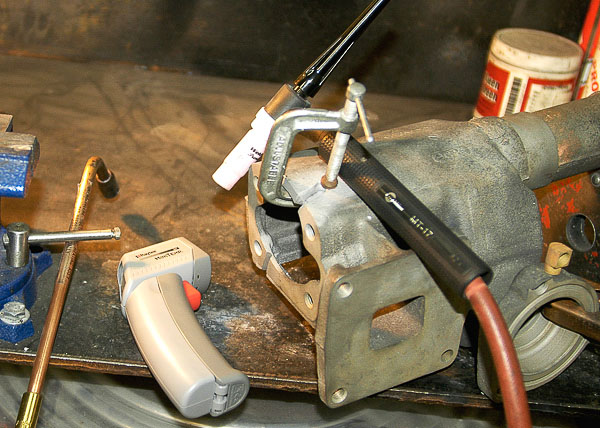
TIG is my welding method of choice for all casting repairs. Here, a cracked, obsolete gray iron casting requires restoration. Cracks have been burr ground to their roots; the casting has been bead blasted; and final cleaning with denatured alcohol removed all contaminants. A hole drilled at the end of each crack prevents continued cracking after welding. I am backing up a thin area with mild steel plate.
TIG (GTAW) weldors earn respect throughout the welding industry. This welding method, originally associated with aluminum ‘Heli-Arc’ work, is now used for titanium, all mild and alloy steels, chromoly, aluminum, magnesium and stainless steel welding.
Once mastered, TIG blends creativity and precision. TIG welding offers controlled, penetrating heat, precise filler metal compatibility, and exceptional fusion with the narrowest heat affected zones (HAZ). Requiring patience and the utmost cleanliness, TIG welding can produce finish welds of the highest caliber. Due to its slow process and the need for exceptionally clean base and filler metals, TIG is commonly used for precise, high-end welding tasks.
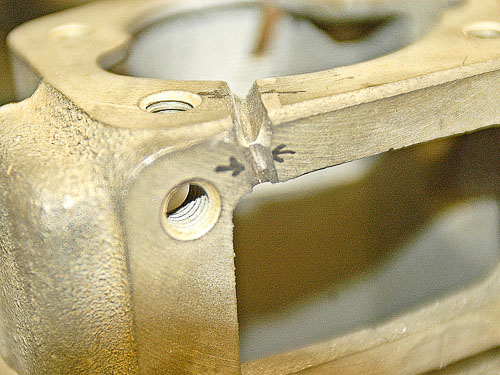
A permanent cast iron repair begins with burr grinding to the root of each crack. I leave paper-thin iron at the root. The first/root TIG welding pass will burn through and provide proper strength and thickness at the repair area. The multiple-pass, TIG fusion weld repair will completely fill these ground-out sections.
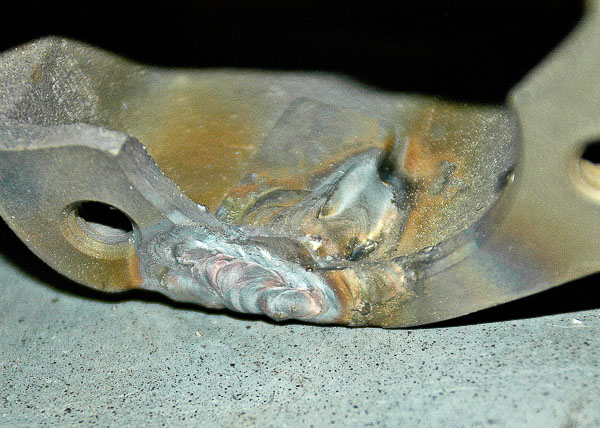
This particular gray iron casting was notorious for stress cracking in its thin areas. Here, I back up the ground out crack with steel plate. Welding filler metal is 100% compatible with both the cast iron and the plate. Fusion is complete here. The crack is filled; the root pass in the crack repair has burned into the plate from the opposite side. At the inside of the casting, I make additional TIG beads, further tying the plate to the casting. This is a cast iron repair made far stronger than the original, non-ductile iron casting.
For the Jeep 4WD enthusiast/hobbyist or professional technicians at a 4WD shop, TIG can apply to casting repairs, shaft and gear work, roll cage construction and full chassis building. Exotic off-road race cars are fabricated with new alloy steel and chromoly tubing, all TIG welded for accuracy, strength and optimal metallurgical compatibility.
I promise that TIG will take more time to master than other welding processes. In fact, TIG weldors almost always possess other welding skills. My own process with TIG/GTAW came after years of gas welding, A.C./D.C. stick (SMAW) arc welding, MIG (GTAW) welding and various combinations of these methods. I am grateful that I began with oxygen-acetylene gas welding, as this process provides the most realistic foundation for TIG welding.
TIG, after all, is a hand fed filler method, much like gas welding. Instead of using a gas torch, however, the operator uses an electrode-holding torch. The TIG torch receives power from a transformer or inverter. Input current to the TIG machine is A.C. Output at the torch can be D.C. (electrode positive or electrode negative) or A.C. frequency on machines for aluminum welding.
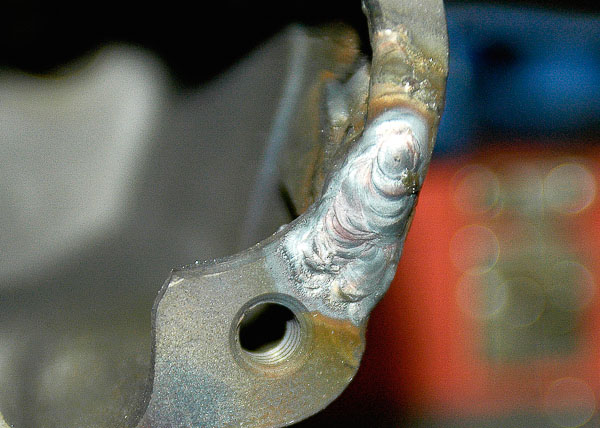
Choice of the right filler rod provides a high carbon, graphite-forming iron repair. The result is no cracks as the metal slowly cools (for nine hours after final weld pass). Machining will restore the flat flange. Contour shaping can make the casting look original. This TIG-GTAW welded section is now much stronger and reliable than new!
While stick/arc welding uses flux-coated, consumable electrodes, and MIG uses a consumable wire or flux-core wire, TIG welding uses a non-consumable electrode. The electrode is a source of pinpoint heat. Once the base metal heats to the melting point, the weldor dips fresh filler rod into that puddle. Here is the similarity to gas welding. Like non-flux core MIG welding, TIG requires a shielding gas to prevent weld oxidation, porosity and contamination of welds from atmospheric gases. Argon is used most frequently. There are mixes and other shield gases, like helium, for special welding processes.
Note: Arguably, it is useful to master gas welding and stick arc before attempting TIG. Nonetheless, there are some who have skipped these foundation steps and gone directly to the TIG/GTAW process. For that reason, I will share and demonstrate TIG processes for all users, the experienced welder and newcomers alike. If you find the effort daunting and have access to a gas (oxygen-acetylene) welding outfit, consider backtracking to my gas welding discussions.

Here is a B-W T86E transmission that Willys used in 2WD models. T86 variations were OEM in vintage Jeep 4WDs. My guess is that during a previous repair, poor assembly work damaged the casting. Rare and time consuming to locate, the extension casting is a candidate for TIG cast iron restoration. I will rebuild the entire transmission, making this casting repair at the same time.
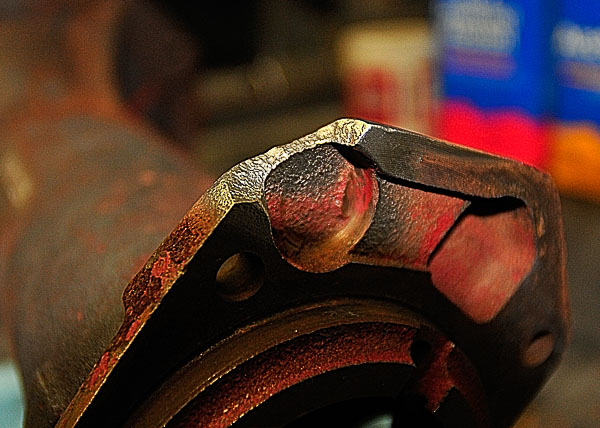
Disassembled, cleaned and glass beaded, the broken T86E tailhousing casting is in full view. Years ago, many of us would have found a good used replacement part. With a Willys/Jeep restoration, that is not always an option today! Despite repair time and cost, it pays to restore this casting. TIG welding and the right filler rod will do the job.
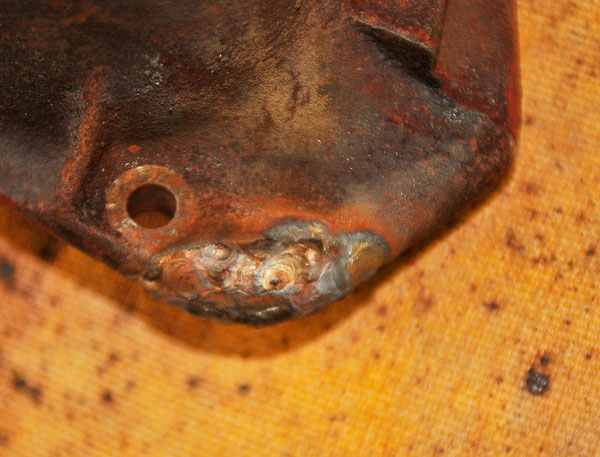
I carefully make successive beads, simulating the shape of the original (missing) piece. The flange gasket, the flanges, the protruding shaft and contours serve as a pattern. Between each pass, I peen heartily with a hammer to diffuse graphite in the weld area. Specialty cast iron rod from Weld Mold Company contains more carbon to help create graphite in the weld. This improves ductility for crack-free welds as the part cools—a nine-hour cooldown following the last weld pass. The casting remained wrapped in my welding blanket during cooldown!

Weld buildup assures non-porous, tight weld bead lapping. Excess weld material is easy to shape with a grinder. This weld filler provides higher tensile than the original casting, which means a permanent and stable “new” casting! Here, the piece is welded and has cooled completely.
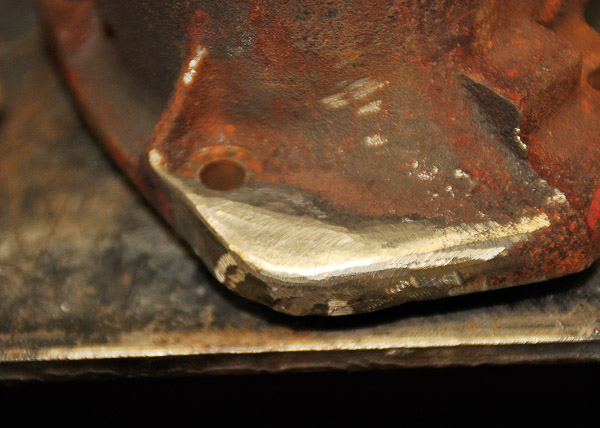
After welding, the area receives rough shaping with a disc grinder. Note the non-porous, thorough penetration and transparent lapping of the weld passes. The original casting and weld area will be indistinguishable. TIG welding can provide these results once you master the technique.
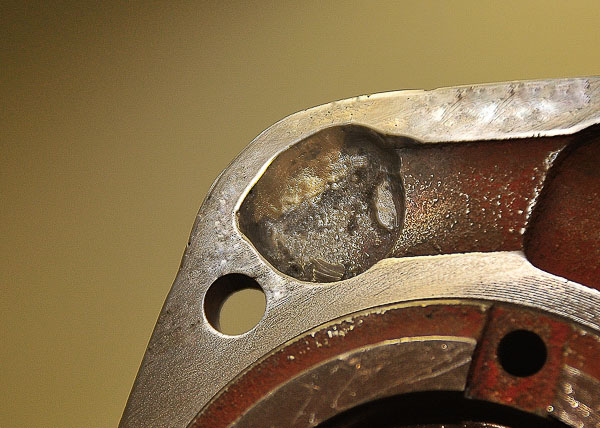
Inside the TIG repaired area, I contour with a carbide bit and Dremel. The casting will now seal properly. The pocket’s shape will clear the protruding shaft. Non-porous, the welded area will be leak free and stronger tensile than the original iron. Slight warpage required minimal milling of the flange face. This did not alter OE tolerances or parts fit.
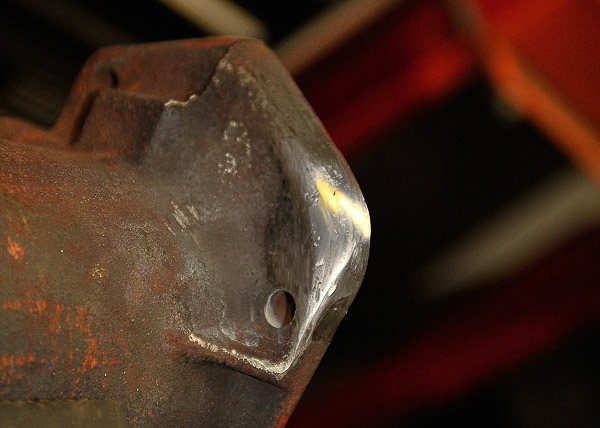
Further shaping is done with an orbital disc sander and rough paper discs. Process took little time. Don’t make this too smooth; you want the finished look to match the surrounding cast areas!
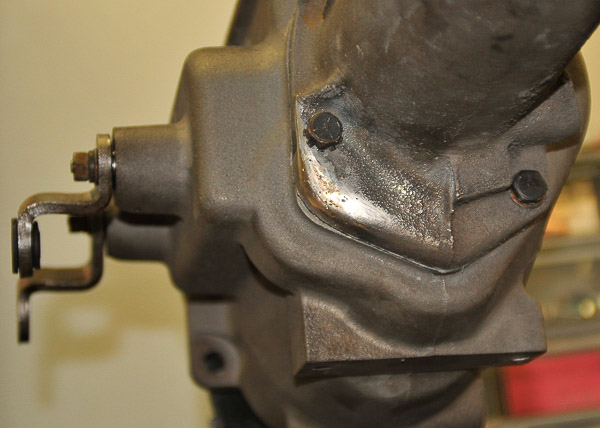
I rebuilt this Borg-Warner T86E transmission with a new (NOS) cluster gear and new 1st/reverse sliding gear, new synchronizer rings, bearings, gaskets and seals. Each worn part was replaced, all tolerances brought to OEM “blueprint” specifications. The transmission will perform as new. This TIG welded, restored casting looks new, too!
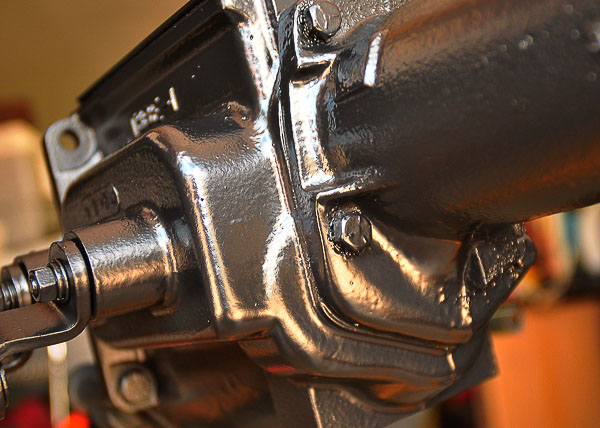
My final touch with classic transmission restorations is a stiff coat of semi-gloss, epoxy two-part primer and sealer. In an area without UV exposure, this can double as the color coat for a durable, rust-inhibiting finish. Restored T86E now has all the virtues of a new transmission. The TIG-welded casting area is in view here—and imperceptible!
TIG is precise and has great penetration with narrower heat affected zones (HAZ). Welding with TIG provides strength and uncontaminated, pure welds when done properly. TIG-GTAW is, however, a slower, more costly and demanding process that requires the utmost cleanliness of both the base metals and the filler rod materials.
“If you want to build a trailer,” the saying goes, “use MIG welding.” When your Jeep 4WD or off-road race vehicle needs the utmost strength and precision in its frame, castings or roll cage, use TIG. For fast and acceptable production aluminum welding (like a trailer), a spool gun and MIG might work. For Jeep aluminum casting repairs or modifying a part made of low-alloy carbon steel, iron, aluminum or stainless steel, TIG is better. If you need to join disparate types of metal, TIG and the right filler rod is superior in every instance.
Composed with HTML Editor
